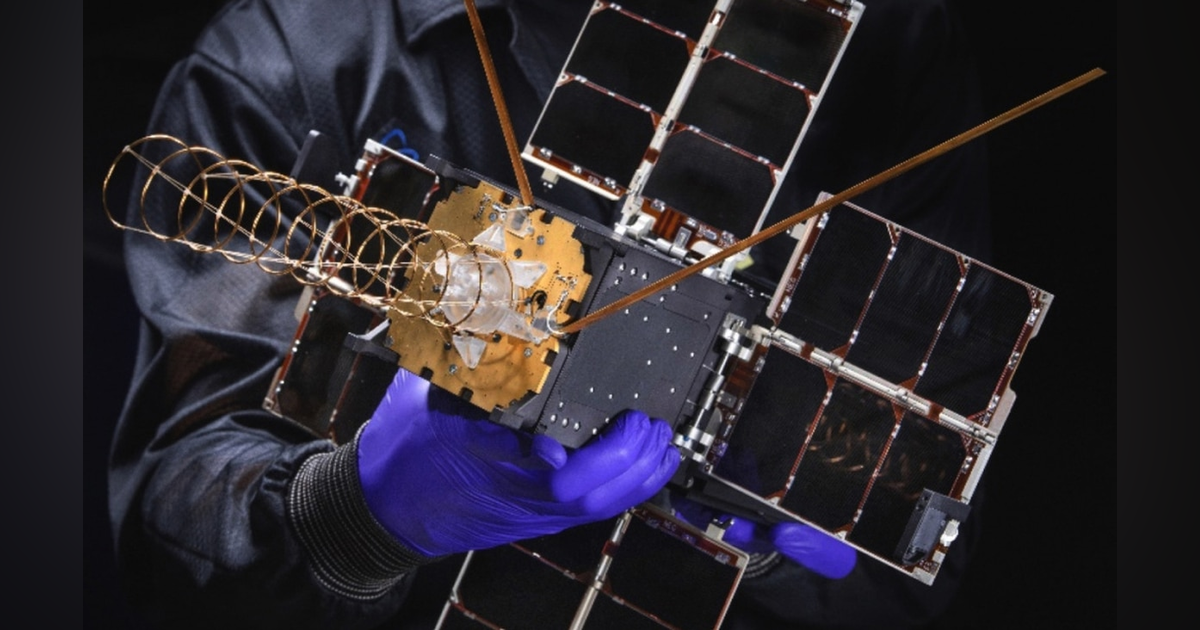Army leaders consider cubesats and artificial intelligence (AI) for real-time targeting from low-Earth orbit |
 |
| The Army is keen to use the vantage of space to find and target beyond-line-of-sight (BLOS) threats. While satellite imagery has traditionally been a product of the intelligence community, the development of relatively affordable yet highly capable small satellites that can operate in low Earth orbit has convinced military leaders that it can play a tactical role on the battlefield. In a demonstration last fall, the Army was able to show that it could take images from satellites on orbit down to Earth, process them with artificial intelligence to find threats, and deliver targeting data to weapon systems in about 20 seconds. That speed is opening a whole slew of possibilities to commanders, enabling them to “see” further down the battlefield in near real time than ever before. That demonstration used images from commercial satellite constellations, but now the Army has its own trio of imagery satellites to further develop this capability. The Army’s Gunsmoke-J program has launched three cubesats to use “emerging advanced electronics to allow the use of dedicated intelligence assets to provide tactically actionable targeting data to war fighters on a responsive and persistent timeline,” according to an annual budget proposal. Gunsmoke-J is a Joint Capability Technology Demonstration conducted by the Army Space and Missile Defense Command and Assured Position Navigation and Timing/Space Cross Functional Team. The program was initially slated to be completed in 2019, but rideshare delays pushed the launch date to this year. While the first satellite in the Gunsmoke-J program was launched and deployed in March by Rocket Lab, the final two cubesats were placed into orbit on June 30. All three took somewhat different paths into space. The second satellite launched aboard a Cygnus cargo resupply mission to the International Space Station back in February. However, the Gunsmoke-J payload wasn’t deployed until shortly after the Cygnus spacecraft departed the station at the end of June. Meanwhile, the third satellite was launched into space aboard a Virgin Orbit LauncherOne rocket, designed to launch in air off a modified 747 aircraft. The mission departed from the Mojave Air and Space Port in California before flying out over the Pacific Ocean to launch the rocket, which then carried the cubesat to its destination orbit — about 300 miles above the Earth’s surface. “This deployment and same day launch of two separate Gunsmoke-J satellites is a major step toward demonstrating what we believe will be enabling tactical warfighter capability,” said Wheeler “Chip” Hardy, division chief, USASMDC Technical Center Space Directorate’s Space Applications Division. “We are excited to be at this point after five years of development. This is the culmination of a lot of hard work by a lot of people to get to this point. We look forward to the verifying demonstrations and a possible future transition of the technology to the tactical forces.” According to the Army’s annual budget request, the satellites will complete a number of on-orbit demonstrations in 2021, culminating in a military utility assessment. Gunsmoke-J will then be transitioned to an Army program of record. “We are very excited because now we can begin our checkout and mission operations as our work is part of a science and technology demonstration effort,” said Gunsmoke Deputy Program Manager Rebecca Nagurney. “If the Gunsmoke experiments are successful, then this work could lead to future systems, which would enhance long-range precision fires in support of the war fighter.” |
Jul 30th, 2021 |
| source |